We had the privilege of having 3 staff from Sentosa to join us in this trip. The actual venue is quite some distance from our meeting point and we had the pleasure of getting to the place via buggies.
The first task is to "slide" down the high sea wall of Serapong. This is my first time to get my butt involve, seating on the sloping and slippery rocks of the sea wall and slowly sit my way down the wall. It was kind of fun and I got worried of hitting the nerites on the rocks near the sandy portion. There is just so many things to talk about.
The first thing I documented is the big parasol green seaweed (Caulerpa peltata). Each stalk of this seaweed looks like a unbrella.
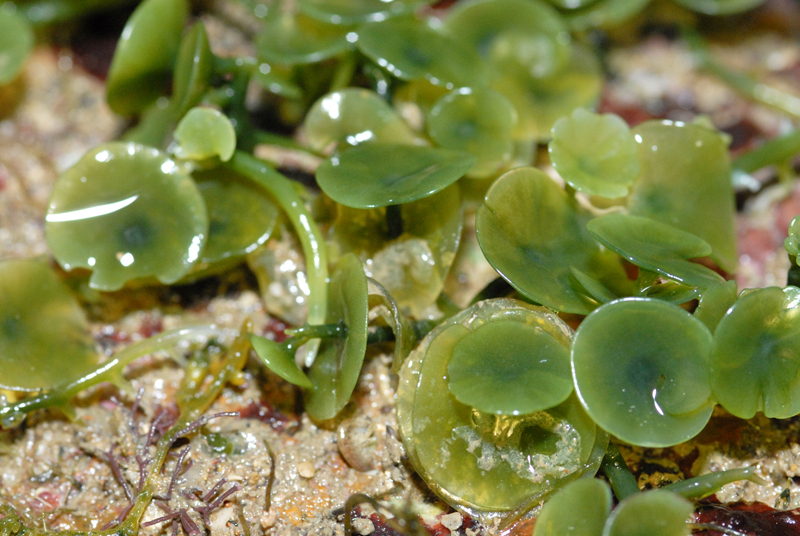 |
| Big parasol green seaweed (Caulerpa peltata) |
While uploading my photos, I noticed that there is a purple brittle star hiding in this coral. Pretty! Are you able to find it in this two pictures? (I need help is the identity of this coral.)
Indeed, Serapong reef is full of brittle stars. Brittle stars are very shy creatures. They are also very sensitive to light. They will go into hiding quickly and would usually leave a tip of its legs to scan the situation.
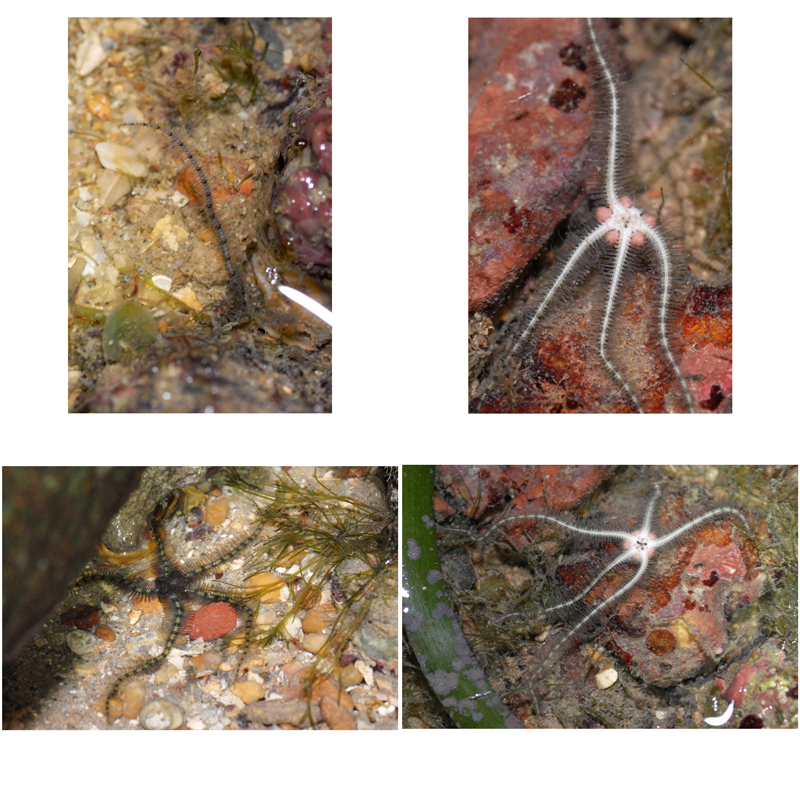 |
| Right photos: Upsidedown brittle star (Ophiothrix sp.) |
There are also longspined scorpionfish (Paracentropogon longispinis). They are very well camouflaged. I spotted 2 of them.
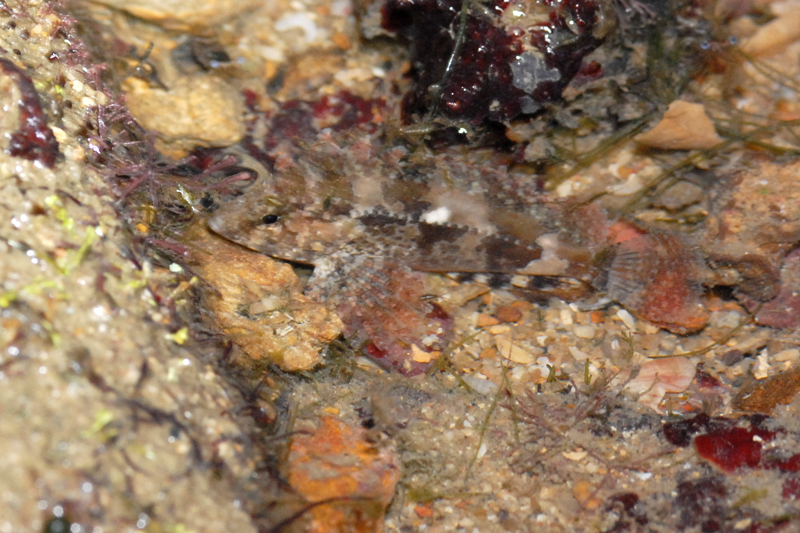 |
| Longspined scorpionfish 1 |
 |
| Longspined scorpionfish 2 |
This looks like a three-spined toadfish (Batrachomoeus trispinosus).
A white-spotted rabbitfish (Siganus canaliculatus) was also seen. This fish is commonly eaten during Lunar New Year.
 |
| White-spotted rabbitfish |
 |
| Anchor tuskfish |
Walking on this shore was a bit of problem. I was not that worried about stonefish today but rather, the rich marine life, corals and sponges available on this shore. Every step that I am about to place, I need to make sure that the damage to this shore is minimal. So I had plan my walking route for a short distance every time I am ready to move on. There are many different types of corals and sponges on this shore. (I am really bad at identifying the different types of corals and also distinguishing between corals, sponges, ascidians.) Here are some of them that I took pictures of.
 |
| Clockwise from top left: Jigsaw maze favid corals (Family Faviidae), ?, Disk Coral (Turbinaria sp.), Button zoanthid (Zoanthus sp.)? |
One special feature of Serapong reef is size of the acropora corals (Acropora sp.). Kok Sheng talks about the acropora corals in his blog.
I found a blue-line flatworm (Pseudoceros sp.) by myself. They are really small flatworms, definately not the size I thought it would be of. It was the striking colour of this animal that made me notice it. Otherwise I would have just missed it.
 |
| Blue-lined flatworm |
There was a floral egg crab (Atergatis floridus) sitting very still in the shallow waters. This crab is commonly seen on among coral reefs on our Southern shores. This crab is highly poisonous and it should not be eaten. The poisonous cannot be destroyed on cooking. This crab is listed as 'Vulnerable' on the Red List of threatened animals of Singapore.
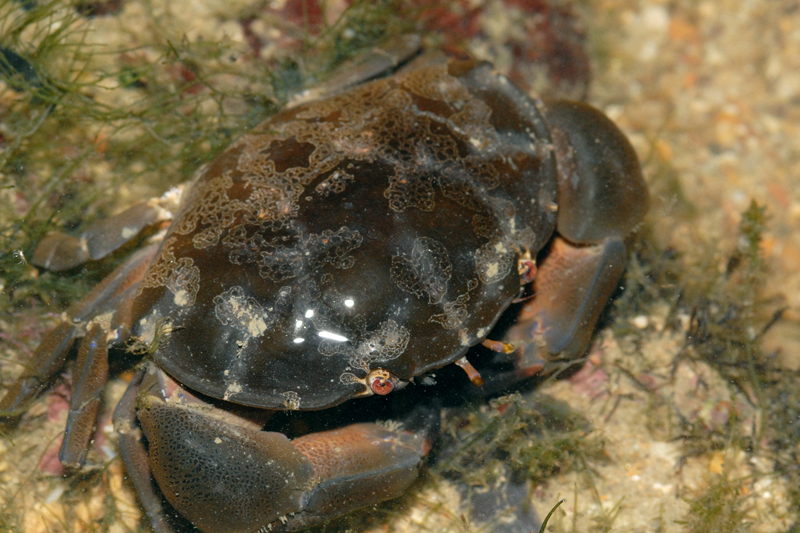 |
| Floral egg crab |
Then I came across a coral in the shaped of a volcano. I called this coral the Serapong reed volcano. In the 'crater' of the 'volcano' are the big parasol green seaweed. (No lava spewing for this volcano.)
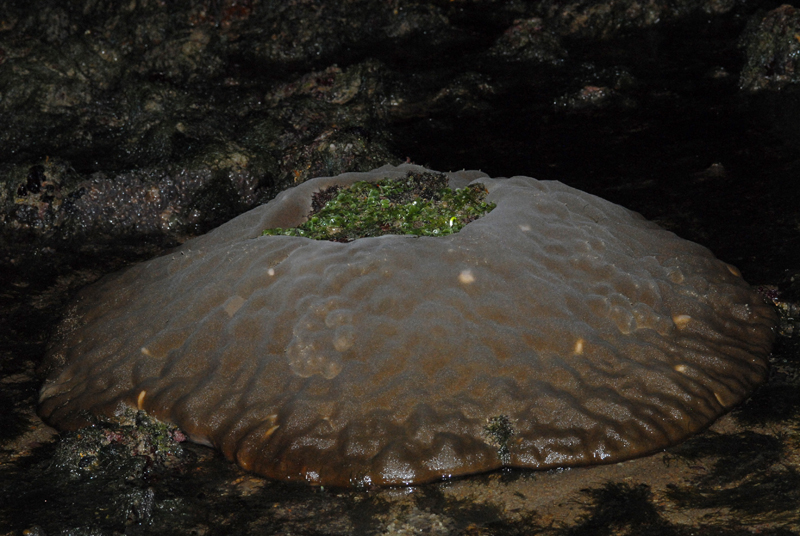 |
| "Serapong Volcano" |
 |
| "Crater" of big parasol green seaweed |
There seems to be patches of seagrass. My guess is the sickle seagrass (Thalassia hemprichii).
 |
| Sickle seagrass? |
Being located right next to a golf course with a few holes right next to the shore, golf balls are sure to find items on this shore. When the golf balls are left on the shore for a long time, marine life takes over and starts to overtake the bumpy surface of the golf balls.
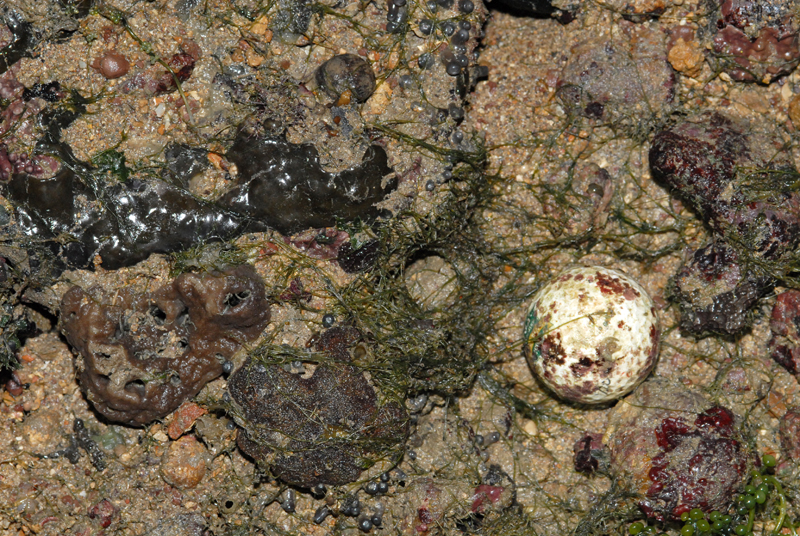 |
| Golf ball found on shore |
A young octopus was seen and it changed colour after at different shots.
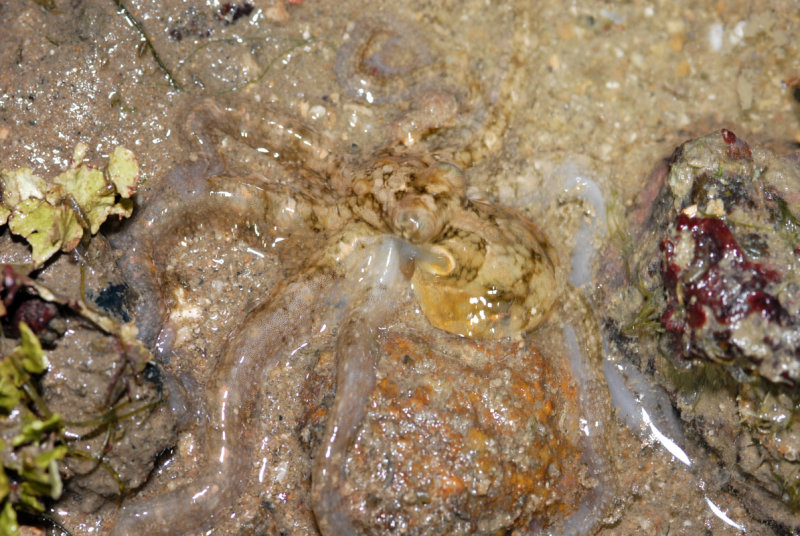 |
| Shot 1 (Camouflage colour with sand) |
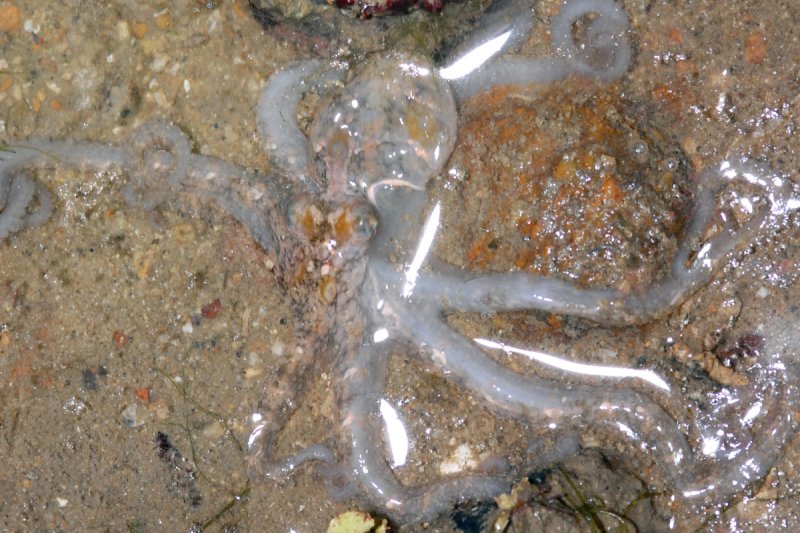 |
| Shot 2 (Colour changed to pale) |
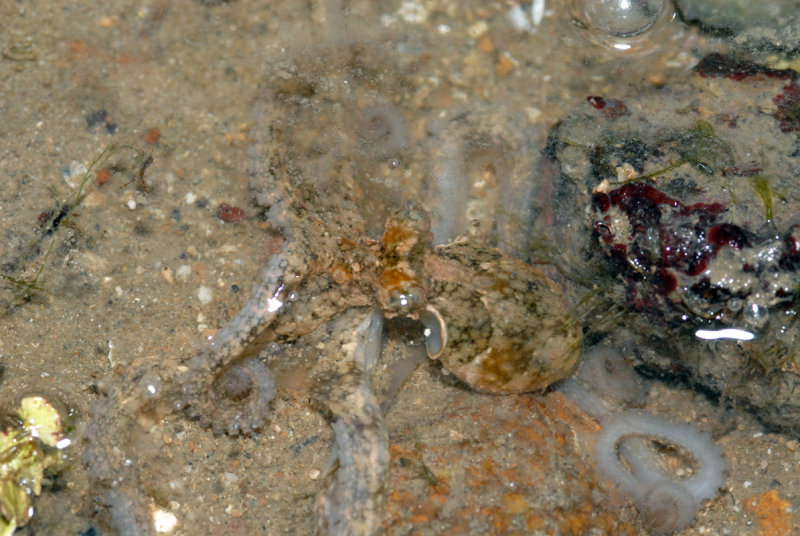 |
| Shot 3 (Colour changed to dark. Looks angry) |
In a small o-ring favid coral (Family Faviidae), there seem to be some bivales living in the coral. The bivales looked like clams. Did the bivales dig their way into the coral? Interesting...
 |
| A clam inside the small o-ring favid coral |
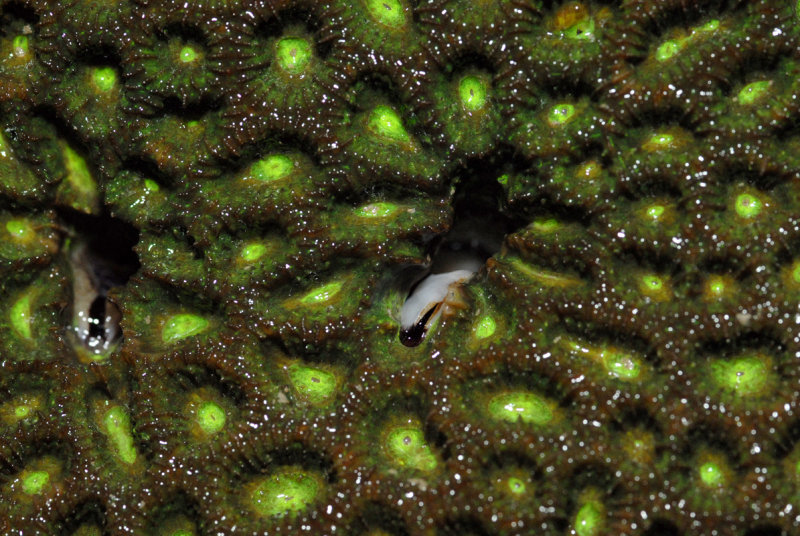 |
| More clams found at different parts of the coral |
Could this be the striped sand anemone?
There are really so many things for me to talk about.
I shall feature one last marine life: purple-spotted yellow flatworm (Pseudoceros laingensis).
I shall feature one last marine life: purple-spotted yellow flatworm (Pseudoceros laingensis).
 |
| Purple-spotted yellow flatworm |
What a wonderful trip to have with a wonderful sunrise.
More of my images of Serapong can be found here.
I will try to identify as many of the photos feature in this post. I would greatly appreciate if my readers could help me along. The marine life world is so big and complicated.
Hope to visit this shore again.
Well... This marks the end of my shore trip for this month (I guess). However there are more exciting activities coming up in this month of May.
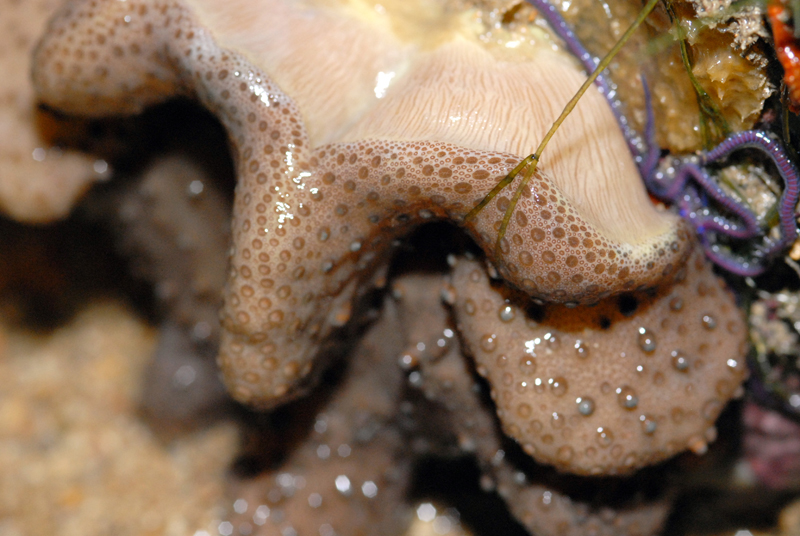
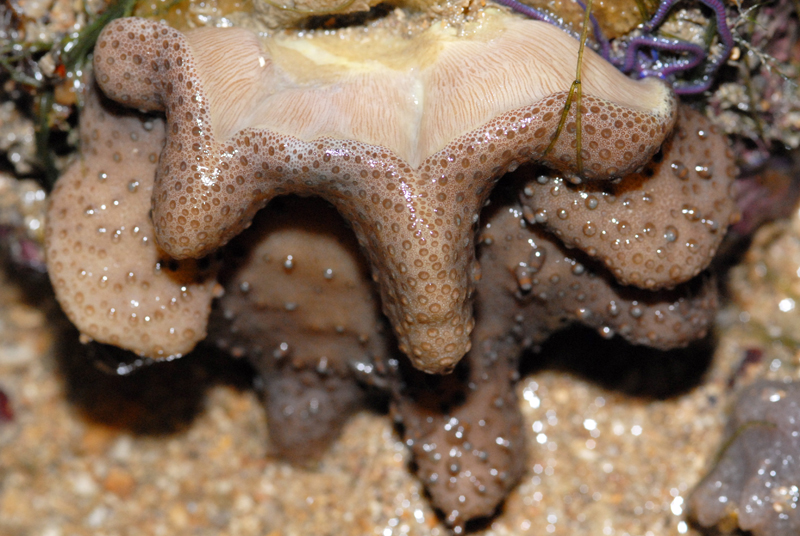

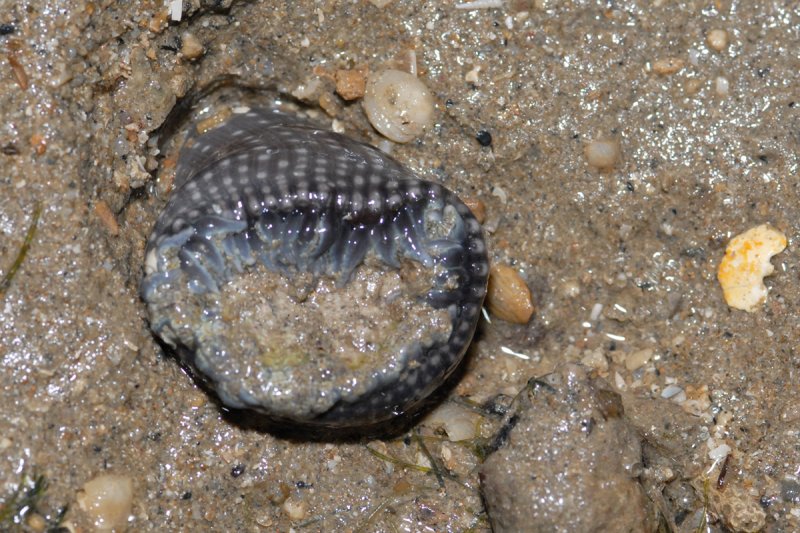

No comments:
Post a Comment